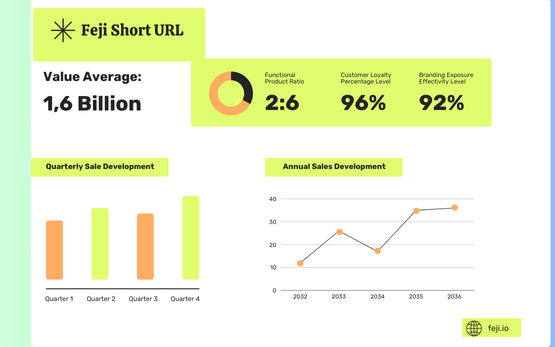Hello, my name is Thanh N. from Feji, and today I am thrilled to take you on an in-depth journey into one of baseball's fascinating statistics: Mound Visits Remaining, commonly known as MVR. Whether you’re an avid baseball fan, a budding coach, a player, or just curious about the intricacies of America's favorite pastime, understanding MVR baseball is crucial. This article aims to provide a comprehensive look at MVR, its impact on the game, and why it's essential for everyone involved in baseball.
What is MVR Baseball?

MVR Baseball Meaning
MVR stands for "Mound Visits Remaining." It's a stat that has been introduced in Major League Baseball (MLB) to limit the number of mound visits by managers, coaches, or players during a game. The rule was implemented to enhance the pace of play and make the game more engaging for fans. So, what exactly counts as a mound visit, and how does MVR affect the game? Let's delve into it.
The Introduction of MVR in Baseball
Baseball, as many fans fondly know, is a game of strategies. Managers and pitchers frequently meet on the mound to discuss tactics, calm nerves, or simply sync up on the next play. However, these visits can slow the game down considerably. In 2018, MLB introduced the mound visits rule, specifically aimed at enhancing the game's tempo. Each team was allotted a maximum of five mound visits per nine-inning game. For extra innings, teams would receive an additional mound visit per inning.
Practical Implications of MVR Baseball Stat
Planning and Strategy
As soon as the MVR rule was introduced, it changed the dynamics of how teams approach their pitching strategies. Managers had to become more judicious about when to visit the mound to offer advice or support to their pitchers. With a limited number of visits (five in a standard nine-inning game), every mound visit became more significant.
Think about it: if a manager has already used up four visits by the sixth inning, they need to tread carefully for the remainder of the game. This limitation requires not only careful planning before and during the game but also trusting that pitchers and catchers can handle situations independently.
Enhanced Communication
With limited visits, the importance of pre-game meetings, and the development of non-verbal communication systems have never been higher. Teams now spend more time devising signals and codes to ensure everyone is on the same page. This necessity has elevated the strategic element of baseball to a whole new level.
Emotional Impact
From a psychological perspective, the MVR rule can be both a challenge and a motivation. Pitchers may feel more pressure knowing that they have fewer opportunities to receive direct guidance from the dugout. However, this pressure can also serve as motivation, pushing them to become more self-reliant and confident in their abilities. On the flip side, managers and coaches might feel a greater sense of urgency and involvement in every visit they make. Every mound visit carries more weight and importance.
MVR Baseball Stat: The Exceptions

No rule is without its exceptions, and MVR is no different. There are specific instances where mound visits do not count towards the MVR limit:
- Injury Visits: If a visit is made to check on a potentially injured player, it does not count against the MVR limit.
- Pitching Changes: Any visit made for the purpose of changing pitchers is exempt.
- Clarifications: Visits made to clarify a complex play or rule.
- Collision or Similar Events: Visits following impactful plays or collisions to ensure player safety.
- Pinch-Hitter Scenarios: If an offensive player substitution occurs, it might necessitate a visit that does not count against MVR.
How MVR Has Evolved the Game
Fan Experience
One of the primary motivations behind the MVR rule was to improve the pace of play, making the games more enjoyable and engaging for fans. And it has worked! By reducing unnecessary delays, the flow of the game has improved, keeping fans glued to their seats and screens.
Strategy and Skill Development
Pitchers and catchers had to adapt and evolve. When there are fewer opportunities to consult with your manager or pitching coach, you have to rely more on your skills and instincts. This shift has resulted in a more dynamic and unpredictable game, adding a layer of excitement and suspense.
The Future of MVR in Baseball
The introduction of MVR is a testament to baseball's adaptability and commitment to improving the game. While some traditionalists bemoaned the change, the general consensus has been positive. The game feels faster, more strategic, and undeniably thrilling.
Potential Adjustments
As with any rule, there's always room for refinement. Some discussions are centered around whether the five-visit limit is optimal or if there should be further flexibility depending on game situations. As the rule has settled in, MLB might consider slight modifications based on feedback from teams and fans alike.
Youth Leagues and Amateur Baseball
Interestingly, the MVR rule has also trickled down to amateur baseball and youth leagues. Coaches at these levels are adopting similar limits to teach young players the importance of strategic thinking and self-reliance. By instilling these values early, the future generations of baseball players are likely to enter the major leagues better prepared for the challenges of the game.
Technological Innovations
The role of technology in aiding communication between pitchers, catchers, and coaches is also worth exploring. Devices or wearables that help relay information quickly and discreetly could potentially reduce the need for mound visits even further, all while adhering to the rules and maintaining the spirit of the game.
Real-Life Stories: MVR in Action
A Manager's Perspective
As a fictional but relatable example, let's consider a manager named Mike. Mike has been in the game for over two decades, long enough to remember the days when mound visits were unlimited. When the MVR rule was first introduced, he was skeptical. How could he effectively manage his pitchers without visiting the mound whenever necessary?
Over time, Mike adapted. He started holding more detailed pre-game meetings, discussing potential game scenarios and developing a robust system of hand signals. By the end of his first season under the new rule, Mike found his team not only adjusted but thrived. His pitchers were more confident, his catchers more communicative, and his games faster-paced. Mike’s story is a testament to the resilience and adaptability embedded in baseball's culture.
A Pitcher’s Journey
Now, let’s shift focus to another fictional character named Jake, a young pitcher who entered the major leagues right after the MVR rule was established. Jake had always leaned heavily on his coach’s mound visits for guidance. The MVR rule forced him to step out of his comfort zone. Initially, Jake struggled, but over time, he refined his skills, improved his focus, and learned to trust his own judgment. Jake’s evolution mirrors the transformative impact that the MVR rule can have on individual players, pushing them to develop independence and self-confidence.
Fan Voices
Lastly, let’s not forget the fans whose reactions have been integral in shaping opinions about the MVR rule. Many fans, like Sarah, have expressed joy at the quicker pace of the game. "I love the faster pace; it keeps me more engaged. There's less downtime, and the excitement is more consistent," Sarah shared during an MLB feedback session. Such positive feedback has bolstered the acceptance of the MVR rule across the board.
Conclusion: The Essence of MVR Baseball
In wrapping up our in-depth exploration of MVR baseball, it's clear that this seemingly small change has had profound implications. From enhancing the pace of play to pushing players and managers to adapt and evolve, the MVR rule highlights the dynamic and ever-evolving nature of baseball.
As fans, coaches, players, or simply lovers of the game, understanding MVR in baseball enriches our appreciation of the sport. Mound visits remaining might seem like just another stat, but as we've uncovered, it carries significant weight in making baseball the thrilling, strategy-laden game we all cherish.
So next time you're at a game or watching from home, keep an eye on the MVR counter. It’s not just a number; it's a window into the strategic heart of baseball. Thank you for joining me, Thanh N from Feji, on this captivating journey through the world of mound visits remaining. Here’s to a future filled with fast-paced, strategic, and endlessly exciting baseball!
MVR Baseball FAQs
What is MVR in Baseball?
MVR in baseball stands for "Mound Visits Remaining." Introduced by Major League Baseball (MLB) in 2018, this rule limits the number of mound visits a team can make during a nine-inning game to five. These visits include trips by managers, coaches, and other players to the pitcher's mound. The main aim of MVR in baseball is to enhance the pace of play, making the game quicker and more engaging for fans. This rule compels teams to use their visits judiciously, requiring better preparation and communication among players, thus adding a strategic depth to the game.
What Does MVR Mean in Baseball?
MVR in baseball stands for "Mound Visits Remaining." Introduced by Major League Baseball (MLB) in 2018, this rule limits the number of times a team can visit the pitcher's mound. Each team is allowed up to five mound visits during a standard nine-inning game. The objective of MVR in baseball is to speed up the pace of play, making the game more exciting for fans. Mound visits, including those by managers, coaches, and other players, must now be used strategically. This rule demands better pre-game preparation and effective communication among team members, adding a new layer of strategy to the sport.
What Does MVR Stand for in Baseball?
MVR stands for "Mound Visits Remaining" in baseball. This rule, introduced by Major League Baseball (MLB) in 2018, limits the number of mound visits a team can make during a nine-inning game to five. Mound visits include trips by managers, coaches, and other players to the pitcher's mound. The primary goal behind MVR in baseball is to enhance the pace of play, making the game faster and more engaging for fans. Teams must now use their mound visits strategically, necessitating better preparation and communication among players. This adds a fresh layer of strategic depth to the game.

 Vietnamese
Vietnamese









Nguyen Hoai Thanh
Nguyen Hoai Thanh is the Founder and CEO of Metaconex. With 12 years of experience in developing websites, applications and digital media, Nguyen Hoai Thanh has many stories and experiences of success to share.